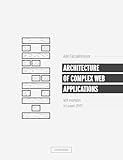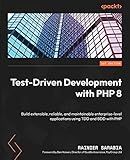Best Tools for Laravel Testing to Buy in October 2025

Laravel 7.X : LEARN BASIC LESSONS & BUILD A CRUD APP (PHP Framework)



Architecture of complex web applications. Second Edition.: With examples in Laravel(PHP)



Test-Driven Development with PHP 8: Build extensible, reliable, and maintainable enterprise-level applications using TDD and BDD with PHP


To test a Laravel pipeline, you can use PHPUnit to write unit tests for each stage of the pipeline. Start by creating a test class that extends the TestCase class provided by Laravel. Within your test class, you can write test methods that simulate the input and output of each stage of the pipeline.
You can use the app() helper function in Laravel to retrieve an instance of the pipeline that you want to test. This allows you to invoke the pipeline with mock data and assert on the output to ensure that each stage of the pipeline is functioning correctly.
You can also use the Pipeline facade provided by Laravel to create a new pipeline instance within your test case. This allows you to manually set the stages of the pipeline and invoke it with mock data for testing purposes.
Make sure to test various scenarios and edge cases within your pipeline to ensure that it behaves as expected under different conditions. You can also use mocking libraries like Mockery to create mock objects and dependencies to isolate the pipeline and test each stage in isolation.
By writing thorough unit tests for your Laravel pipeline, you can ensure that it functions correctly and reliably in your application.
What are some common pitfalls to avoid when testing Laravel pipelines?
- Not defining all required parameters: Ensure that all necessary parameters are defined when testing pipelines. This includes any dependencies, mocked or stubbed objects, and input data.
- Overly complex test cases: Avoid creating overly complex test cases that are difficult to understand and maintain. Keep test cases concise and focused on specific functionalities.
- Ignoring edge cases: Make sure to test the pipeline with different types of input data, including edge cases and boundary conditions. This will help identify any unexpected behaviors or issues.
- Not testing all stages of the pipeline: Ensure that each stage of the pipeline is tested independently to verify that it produces the expected output. This includes testing any middleware, filters, or other processing steps.
- Relying solely on integration tests: While integration tests are important, it is also essential to write unit tests for individual pipeline components to ensure they function correctly in isolation.
- Neglecting error handling: Make sure to test how the pipeline handles errors and exceptions, including validating error messages, handling exceptions, and verifying the correct behavior in case of failures.
- Not updating tests with code changes: As the pipeline code evolves, make sure to update the corresponding test cases to reflect any changes. Failure to update tests can lead to false positives or negatives during testing.
How to test individual stages in Laravel pipeline?
To test individual stages in a Laravel pipeline, you can follow these steps:
- First, create a new test class for testing the pipeline stages. This test class should extend the TestCase class provided by Laravel.
- Use the mock function to mock any dependencies or objects that the pipeline stages depend on.
- Instantiate an instance of the pipeline class and pass in the mocked dependencies.
- Call the handle method on the pipeline instance and pass in an input that you want to test.
- Assert that the output matches the expected result for the specific stage you are testing.
- Repeat these steps for each stage in the pipeline that you want to test.
Here is an example of how you can test an individual stage in a Laravel pipeline:
use Tests\TestCase;
class PipelineStageTest extends TestCase { public function testFirstStage() { // Mock any dependencies $mockDependency = $this->createMock(SomeClass::class);
// Instantiate the pipeline with the mocked dependency
$pipeline = new Pipeline(\[
function ($input, $next) use ($mockDependency) {
// Call logic for the first stage
$result = $mockDependency->someMethod($input);
// Continue to the next stage
return $next($result);
},
// Add more stages if needed
\]);
// Call the handle method on the pipeline with some input
$output = $pipeline->handle($someInput);
// Assert that the output matches the expected result
$this->assertEquals($expectedOutput, $output);
}
}
By following these steps, you can test individual stages in a Laravel pipeline to ensure that they are functioning correctly.
What is the difference between manual and automated testing of Laravel pipelines?
Manual testing of Laravel pipelines involves testers manually executing and verifying the functionality of each stage in the pipeline. Testers might have to manually input data at different stages of the pipeline and ensure that the output is as expected. Manual testing requires human intervention and is not as efficient as automated testing.
On the other hand, automated testing of Laravel pipelines involves writing scripts that automatically test the functionality of each stage in the pipeline. Automated testing tools can simulate the input data, execute the pipeline, and verify the output without human intervention. It is more efficient and faster compared to manual testing.
Overall, the main difference between manual and automated testing of Laravel pipelines is the level of human intervention required. Manual testing involves testers performing tests manually, while automated testing involves using scripts or tools to automate the testing process. Automated testing is generally preferred for its efficiency, speed, and repeatability.
What is the role of test fixtures in Laravel pipeline testing?
In Laravel pipeline testing, test fixtures are used to set up the initial state of the application before running the tests. Test fixtures typically include setting up the database with sample data, creating mock objects, and initializing any necessary dependencies.
The role of test fixtures in Laravel pipeline testing is essential for ensuring that the tests are consistent and reliable. By creating a standardized set of test fixtures, developers can ensure that each test runs in a predictable environment and that the results are consistent across different test runs.
Additionally, using test fixtures helps to isolate the code being tested from external dependencies, making it easier to identify and fix bugs. Test fixtures also help to improve the efficiency of testing by reducing the setup time for each test and allowing developers to focus on writing and running tests rather than setting up the test environment.
Overall, test fixtures play a crucial role in Laravel pipeline testing by providing a standardized and consistent environment for running tests, improving the reliability and efficiency of the testing process.
What is the process of setting up a test environment for Laravel pipeline testing?
Setting up a test environment for Laravel pipeline testing involves the following steps:
- Install Laravel: First, you need to install Laravel on your local system. You can do this by using Composer, a dependency manager for PHP. Run the following command in your terminal to create a new Laravel project:
composer create-project --prefer-dist laravel/laravel project-name
Replace project-name with the name of your project.
- Configure PHPUnit: Laravel comes with PHPUnit pre-installed for testing. You can find the configuration file for PHPUnit in the phpunit.xml file in the root directory of your Laravel project. You can customize this file according to your testing requirements.
- Create a pipeline: Next, you need to create a pipeline class for testing. Pipelines are responsible for passing the input data through a series of filters or middleware. You can create a pipeline using the following artisan command:
php artisan make:pipeline PipelineName
Replace PipelineName with the name of your pipeline.
- Write tests: After setting up the pipeline, you need to write tests to verify the functionality of your pipeline. You can create test classes using PHPUnit. Test the various methods of your pipeline to ensure that it is working correctly.
- Run tests: Finally, you can run your tests using PHPUnit by running the following command in your terminal:
./vendor/bin/phpunit
This will execute all the tests in your Laravel project and display the results.
By following these steps, you can set up a test environment for Laravel pipeline testing and ensure that your pipelines are working as expected.
What is the best approach for testing complex Laravel pipelines?
Testing complex Laravel pipelines can be challenging due to the various stages and dependencies involved. However, there are some best practices that can be followed to effectively test these pipelines:
- Unit Testing: Break down the pipeline into individual stages and write unit tests for each stage separately. This allows for isolated testing of each component, making it easier to identify and fix any issues.
- Mock Dependencies: Use mocking frameworks such as PHPUnit Mockery to simulate the behavior of external dependencies like services, databases, or APIs. This helps in keeping the tests isolated and predictable.
- Use Data Providers: Utilize data providers to test the pipeline with various input data and edge cases. This ensures that the pipeline handles different scenarios and edge cases correctly.
- Integration Testing: Test the pipeline as a whole by running end-to-end tests to validate the flow of data through all stages. This helps in identifying any issues that may arise due to the interactions between different components.
- Stubbing Input/Output: Stub the input and output of the pipeline to simulate real-world scenarios and verify the correctness of the data processing at each stage.
- Test Driven Development (TDD): Follow the TDD approach by writing test cases before implementing the pipeline logic. This helps in ensuring that the pipeline meets the expected requirements and behaves as intended.
By following these best practices, you can effectively test complex Laravel pipelines and ensure the reliability and correctness of your application.
